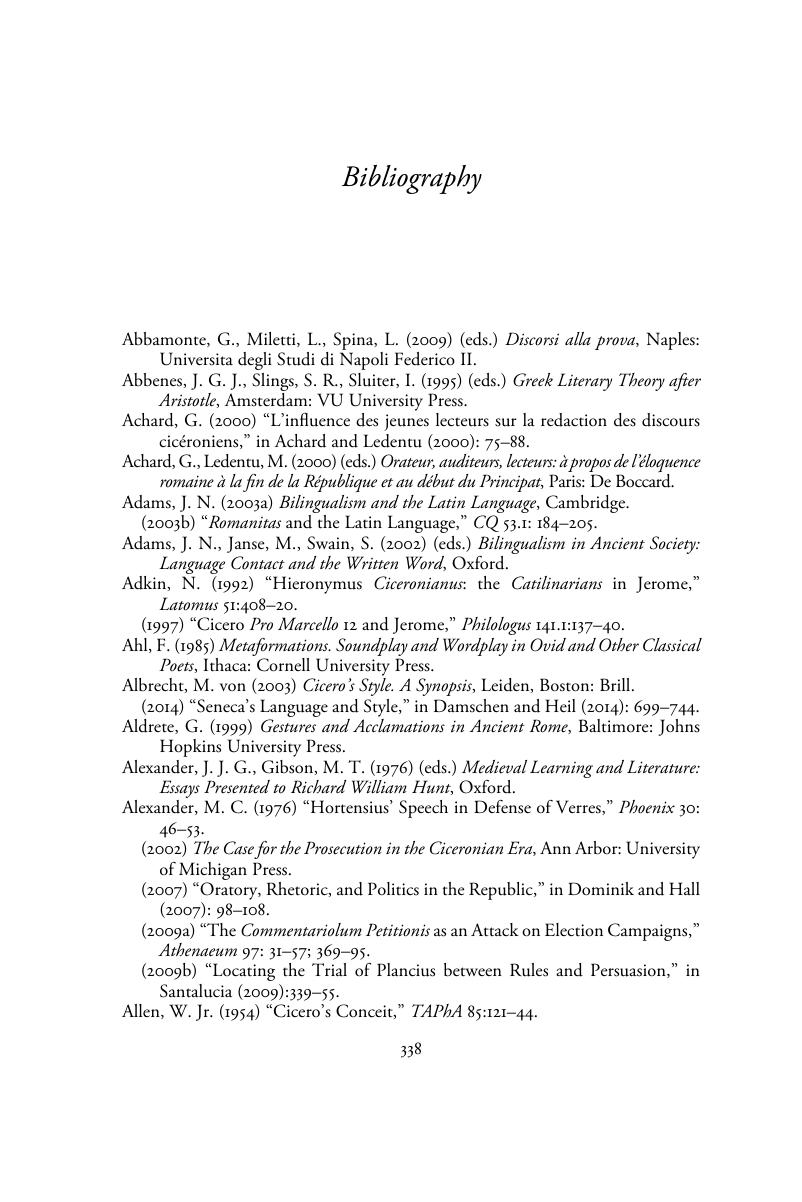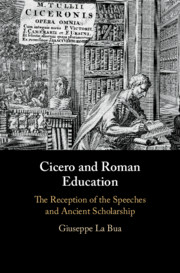Book contents
- Cicero and Roman Education
- Cicero and Roman Education
- Copyright page
- Dedication
- Contents
- Acknowledgments
- Abbreviations
- Introduction
- Chapter 1 Cicero Presents Himself
- Chapter 2 Beyond the Author
- Chapter 3 Between Praise and Blame
- Chapter 4 Teaching Cicero
- Conclusion
- Bibliography
- General Index
- Index Locorum
- References
Bibliography
Published online by Cambridge University Press: 22 January 2019
- Cicero and Roman Education
- Cicero and Roman Education
- Copyright page
- Dedication
- Contents
- Acknowledgments
- Abbreviations
- Introduction
- Chapter 1 Cicero Presents Himself
- Chapter 2 Beyond the Author
- Chapter 3 Between Praise and Blame
- Chapter 4 Teaching Cicero
- Conclusion
- Bibliography
- General Index
- Index Locorum
- References
Summary

- Type
- Chapter
- Information
- Cicero and Roman EducationThe Reception of the Speeches and Ancient Scholarship, pp. 338 - 383Publisher: Cambridge University PressPrint publication year: 2019



